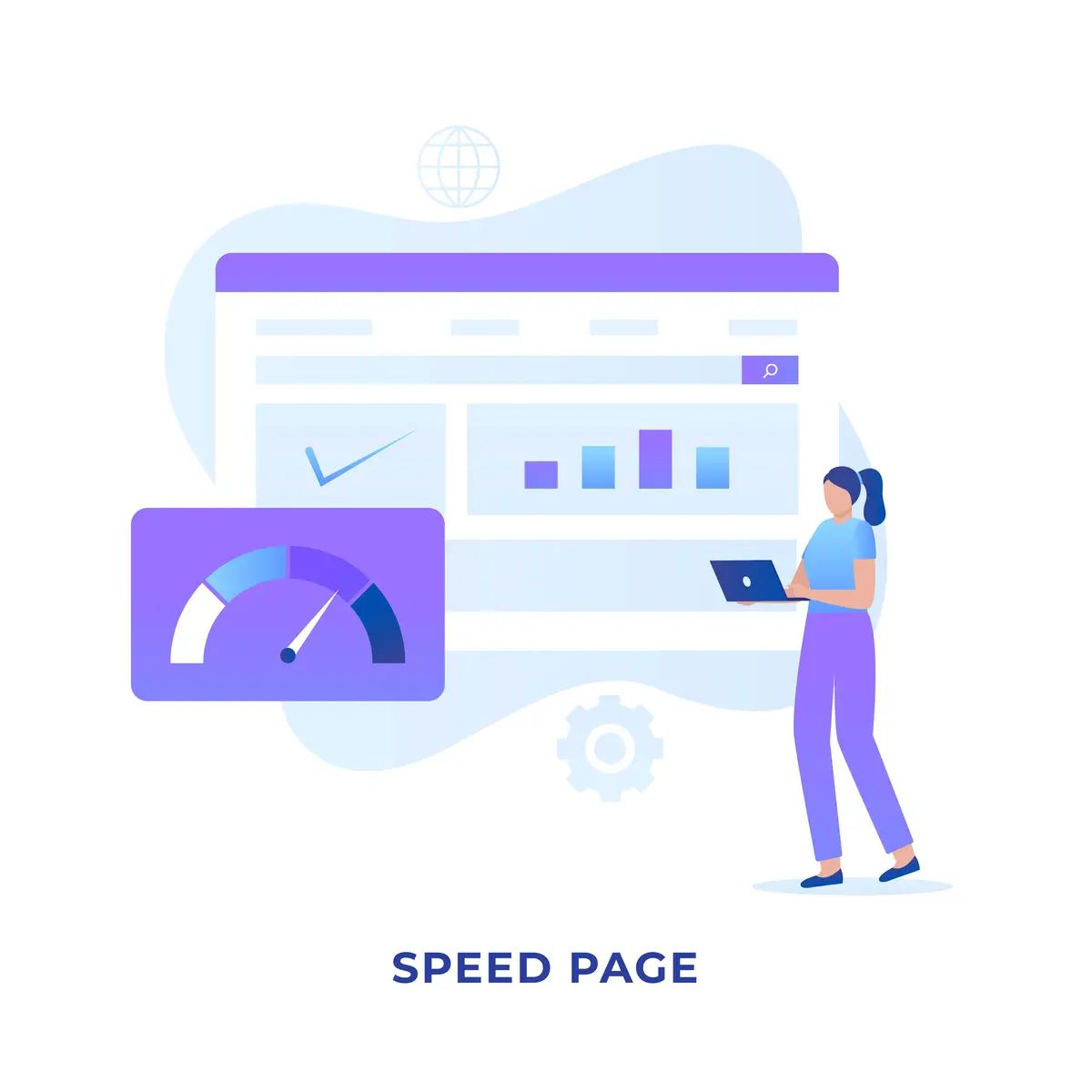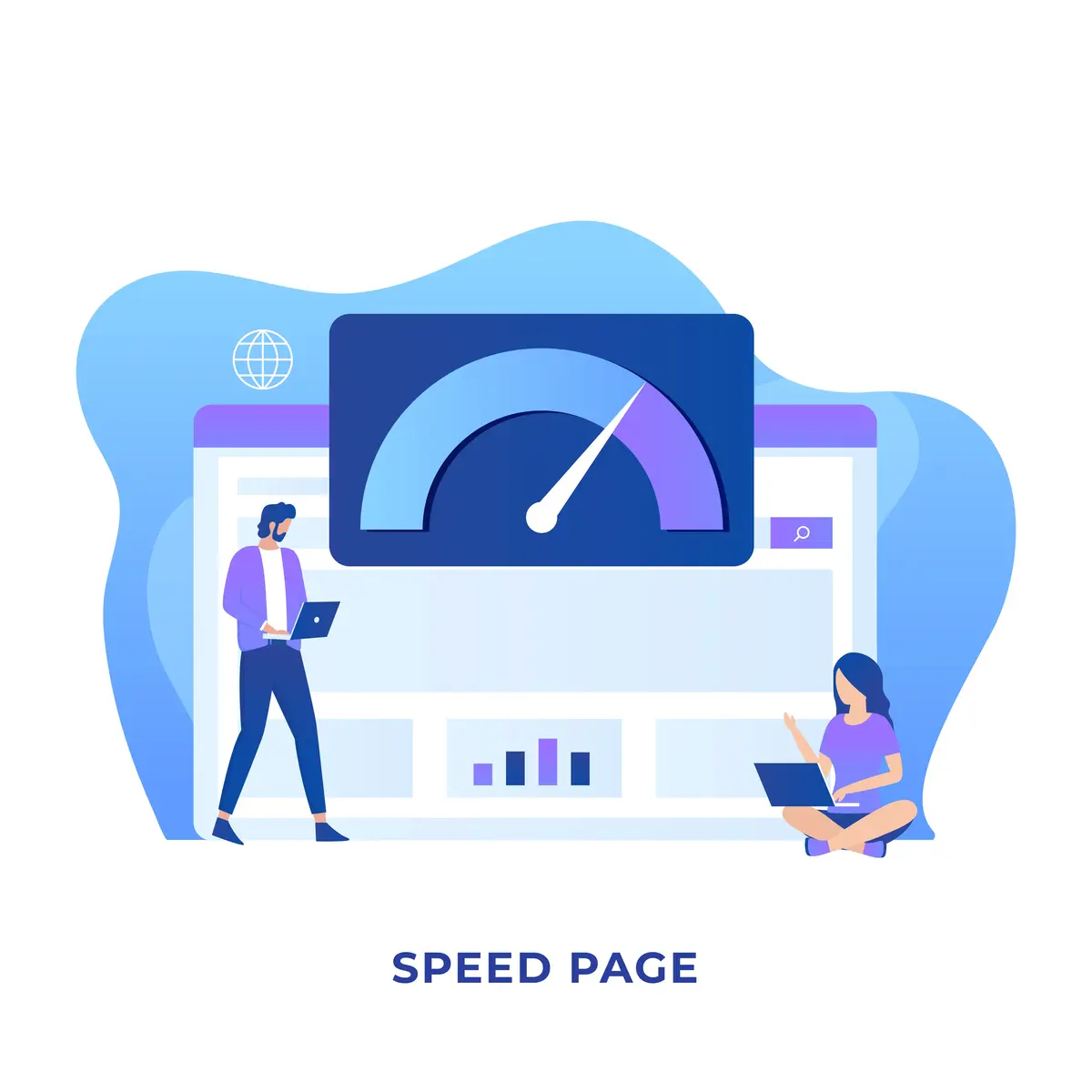Page Speed Optimization Tips for Better SEO
Page speed is a critical factor in SEO, directly impacting both user experience and search engine rankings. Slow-loading pages can lead to higher bounce rates, reduced user engagement, and lower visibility on search engine results pages (SERPs). Optimizing your website’s speed improves user satisfaction, boosts rankings, and ensures better performance on mobile and desktop devices. Below is a comprehensive guide to improve page speed, with each section detailed for actionable insights.

Minimize HTTP Requests
Each HTTP request made to load elements like images, CSS, and JavaScript slows down your website. Reducing these requests significantly improves loading times.
- Combine CSS and JavaScript Files: Merge multiple CSS or JavaScript files into a single file to minimize the number of requests. This is especially effective for websites with many small scripts and stylesheets.
- Use CSS Sprites: Combine small images, such as icons or buttons, into a single image file (sprite) and display parts of it using CSS. This approach reduces HTTP requests and improves loading times.
- Limit Third-Party Plugins and Widgets: Minimize the use of unnecessary plugins, widgets, or tracking scripts that generate additional requests.
Example: Combine multiple social media icons into one sprite to load them as a single file.
Tools: Chrome Developer Tools and online analyzers like Pingdom.
Example Resource: Reduce HTTP Requests Guide

Optimize Images for Faster Loading
Images often make up a significant portion of a webpage’s size, and optimizing them can drastically improve loading times.
- Choose the Right Format: Use JPEGs for photos, PNGs for graphics with transparency, and SVGs for scalable icons.
- Compress Images: Tools like TinyPNG and ImageOptim can reduce image file sizes without noticeable quality loss.
- Implement Lazy Loading: Only load images as they come into view, deferring those not immediately visible. This is particularly effective for image-heavy pages.
Example: Compress a 2MB image to 500KB to reduce load time while maintaining quality.
Tools: TinyPNG, Compressor.io
Example Resource: Image Optimization Guide
Enable Browser Caching
Browser caching stores static files like images, CSS, and JavaScript on users’ devices, reducing load times for repeat visits.
- Set Expiration Dates: Configure your server to cache static resources for extended periods (e.g., one month or longer).
- Leverage Caching Plugins: For WordPress, tools like W3 Total Cache or WP Super Cache simplify caching setup.
- Use Cache-Control Headers: These define how long resources should be stored in the browser’s cache, improving load speeds for returning users.
Example: Cache static elements like images and CSS files for 30 days to improve repeat user experience.
Tools: Google PageSpeed Insights, GTmetrix
Example Resource: Browser Caching Guide
Minify CSS, JavaScript, and HTML
Minification removes unnecessary elements like spaces and comments from your code, reducing file sizes and speeding up page loading.
- Use Minification Tools: Compress CSS, JavaScript, and HTML files using tools like UglifyJS, CSSNano, or HTMLMinifier.
- Automate Minification: Plugins like Autoptimize or WP Rocket can automatically minify code for WordPress users.
- Test After Minification: Verify your website’s functionality after minification to avoid breaking critical features.
Example: Compress CSS and JavaScript files to reduce overall page size by 20–30%.
Tools: UglifyJS, CSSNano
Example Resource: Code Minification Guide
Reduce Server Response Time
Server response time (Time to First Byte, or TTFB) affects how quickly your site begins loading. Aim for a response time under 200 milliseconds.
- Choose High-Quality Hosting: Upgrade from shared hosting to VPS or dedicated hosting for faster server response.
- Use a CDN: Content Delivery Networks like Cloudflare distribute your site’s content across multiple servers worldwide, reducing latency.
- Optimize Databases: Regularly clean your database by deleting spam comments, removing old drafts, and optimizing tables.
Example: Reduce server response time by hosting media-rich websites on a dedicated server.
Tools: Google PageSpeed Insights, Pingdom
Example Resource: CDN Guide

Implement Accelerated Mobile Pages (AMP)
AMP delivers lightweight web pages that load almost instantly on mobile devices, improving mobile SEO and user experience.
- Install AMP Plugins: WordPress users can use plugins like AMP for WP to set up AMP quickly.
- Streamline Mobile Content: Remove unnecessary scripts, widgets, and elements that slow down mobile pages.
- Monitor AMP Performance: Use Google Search Console to identify AMP issues and track performance metrics.
Example: An AMP-enabled blog post can load in less than 1 second, enhancing user satisfaction.
Example Resource: AMP Guide
Enable Gzip Compression
Compression reduces the size of your files before they’re sent to browsers, improving load times.
- Activate Gzip Compression: Configure your server to compress HTML, CSS, and JavaScript files using Gzip or Brotli.
- Test Compression: Use tools like Check Gzip Compression to verify if files are being compressed.
- Compress All Major Files: Ensure compression is applied to all static resources for maximum benefit.
Example: Compressing a 100KB JavaScript file to 25KB reduces loading times significantly.

Reduce Redirects
Redirects add additional HTTP requests, slowing down page loading times.
- Minimize Redirect Chains: Consolidate multiple redirects into one direct link to reduce loading delays.
- Audit Redirects Regularly: Identify and fix unnecessary redirects using tools like Screaming Frog or Ahrefs.
- Limit 301 Redirects: Use them sparingly to maintain speed and pass SEO value.
Example: Eliminate intermediate redirects between old and new pages for faster access.
Example Resource: Redirection Guide
Optimize CSS Delivery
CSS can block rendering if not optimized, delaying the display of page content.
- Inline Critical CSS: Add CSS for above-the-fold content directly in your HTML.
- Defer Non-Critical CSS: Use the
deferorasyncattribute to load CSS not immediately required for page rendering. - Prioritize Above-the-Fold Content: Focus on loading visible content first for faster perceived load times.
Example Resource: CSS Optimization Guide
Regularly Monitor and Test Page Speed
Optimization is an ongoing process. Regularly test your site to identify and fix emerging issues.
- Use Google PageSpeed Insights: This tool provides actionable suggestions for improving page speed.
- Track Metrics: Monitor key metrics like First Contentful Paint (FCP) and Largest Contentful Paint (LCP) to measure performance.
- Iterate and Improve: Implement changes based on testing results and track improvements over time.
Example Resource: Page Speed Insights Guide
Contact Us
Drop Us a Line
Talk to Our SEO Experts – Start Your Success Journey!
